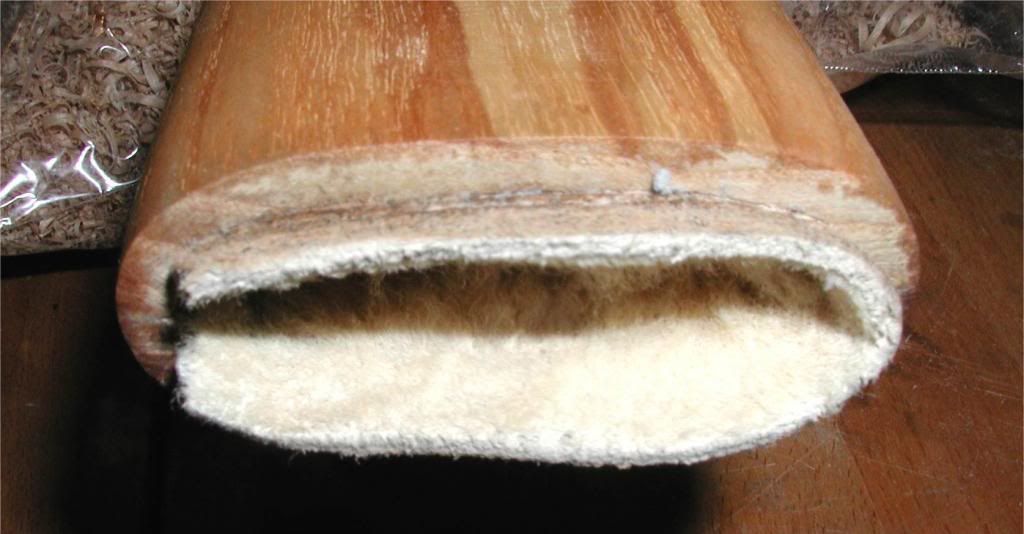Since no organic belt slides, the piece on the front of a scabbard for the suspension belt/system, have survived from the period I want to keep to the construction methods of, 9th century Anglo-Saxon with perhaps a nod towards 10th century Anglo-Norse, Some of this is guess work based on the work of some very clever bunnies. Since the antler i have isnt big enough for the job I decided to use horn which i have some of and which seams a likely material used.
Impressions of belt/strap slides which during this period were always under the covering material, were found on numerous discarded 1 to 2 mm thick calfskin scabbard covers dug up at York. From the types used I decided to use a York type 1 slide, basically a long narrow triangle of horn (or antler, or something else that hasnt survived) 4 or 5 inches long. This was either bowed out in someway to accomodate the strap, or had a hole carved out the back or there was a groove in the wood it was fixed to. Since the wood of the scabbard was quite thin, say 1/8th (3.175mm ) of a inch which Ive tried to replicate (later it became incredibly thin say by the 12 th C) I'm intending to inset the ends into the wood so only 2mm shows above the surface, so i'll be only going a mill or so down. I'll be using hide glue and some linen tape to bind the ends on. To allow a decent thickness of strap to go under the slide I will be removing some wood, hot moulding a bend in the middle of the slide and if required be carving the curved section out some more.
Anyroad, I dug out a old souvenir cow horn i'd already used the end of and sawed it into two pieces to make working it easier
I then found a suitable lidded vessel to boil them in, something that wasnt to be used for food again incase the process tainted the metal. the bottom half of one of the double boilers I aquired from carboots proved to be ideal.
I then got it to a good rolling boil and tested it every half hour to see if the horn had softened. i periodically topped it up from the kettle and made sure the windows were open as it smelt quite bad.
While it was boiling away i set up where I wanted to clamp the pieces down, to flatten the ends and leave a tunnel under the middle section. I rounded off the edges of a 3mm thick 1 inch wide piece of scrap ply and made a couple of plates to help spread the pressure coming off the clamps, I also rounded off the edges facing the 1 inch strip.
After 2 hours the piece I wanted to make the slide from had softened some. it still required quite a lot of presure to flatten it but I clamped it down as hard as I could, taking due care as I was dealing with boiling water after all! I listened carefully for any sounds of cracking and didnt hear anything.
Ill now leave it for a few hours and it will have hopefully taken on its new shape.
As a experiment i gave the other piece a extra half hour and then between two blocks of scrap wood, squished it good and hard in a bench wood vice.
had i thinned and shaped the pieces before hand they would have been easier to heat up ( the waters just a medium for transfering the heat safely) and bend but I wanted to leave as much material so i could work it to fit.
More when the clamps come off! If this fails I will have to try again or carve it down from a thicker piece.
ATB
Tom















